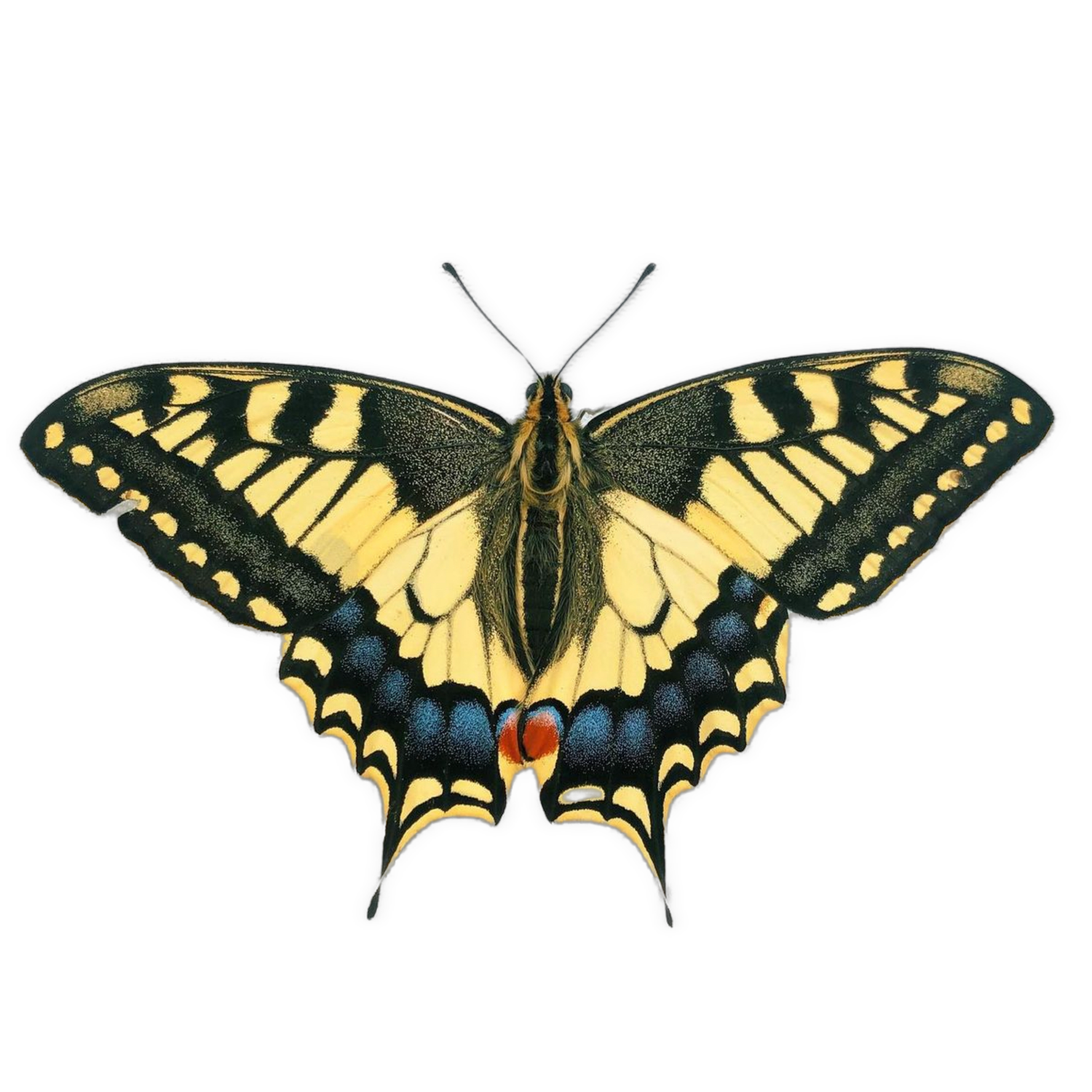Caring for adult butterflies and moths
Silkmoths
Very simply, you just need a net or cage to keep them in, relative to their size. If you are trying to breed them, a medium cage is usually best as it gives them room to fly but not get lost. Only one or two pairs per cage would be advisable, as males overwhelmed with pheromones will not be able to trace the source accurately. They do not need host plant leaves to lay eggs, so keep the cage clear and allow the moths to lay eggs on the mesh as they can be easily removed later.
Hawkmoths
Many of our native hawk moths do not feed (lime, eyed, poplar), however some do (death’s head, Oleander, Elephant). In which case, a solution of honey water makes a nutritious meal. Hand feeding will typically be necessary in captivity, if you do not know what this is there are lots of excellent videos on youtube. It is a useful skill to acquire anyway. Honey water at about 30-40% is ideal.
Swallowtails
Hand feeding is also a good idea for swallowtails and very straightforward. They may also drink nectar from flowers if in a sunny spot. If you have a greenhouse setup, they will typically feed readily from flowers and feeders without help, but I’d always recommend giving them a feed on day 2 after emerging to give them a head start.
Morphos, Owls, Brushfoots (basically all other butterflies)
These are the easiest to feed, usually you can get them to drink simply by placing a butterfly onto the food source, e.g. sugar/honey water, or fruit. Banana is great for butterflies, mushed up with some sugar water or honey it provides a very rich food source. Cage sizes should be selected based on the size/needs of your chosen species.
This is also essentially the same for Heliconiids, however they require the amino acids from pollen in their food source. This can be achieved with fresh flowers, or by supplementing amino acids into a sugar/honey water mixture.
